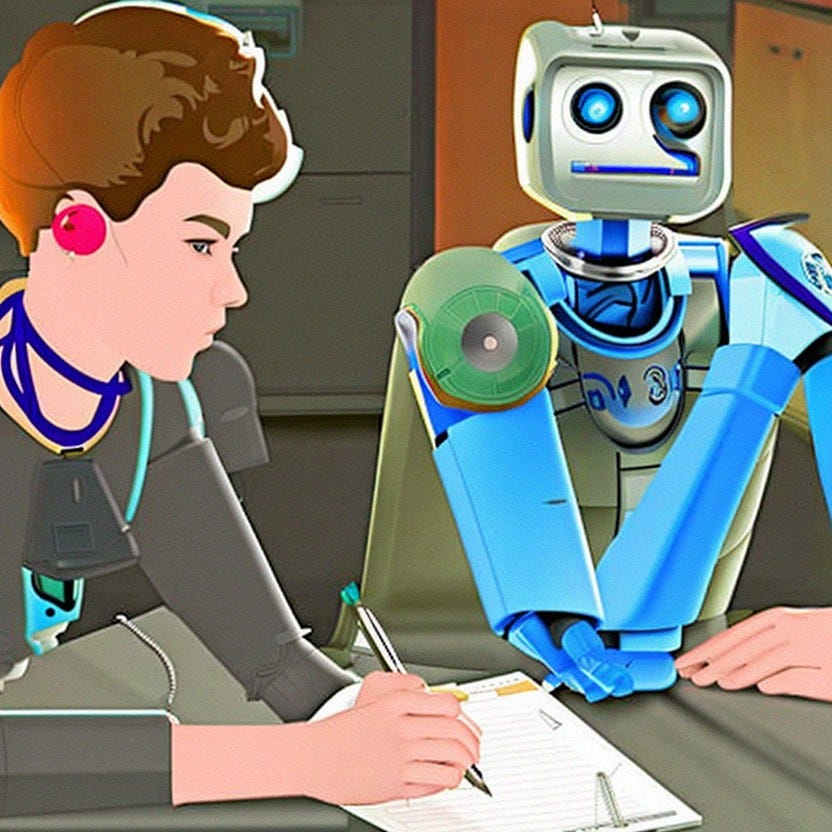I’m Prof. Watson and this is How to get Smarter with Neuroscience, a twice-monthly newsletter on neuroscience and artificial intelligence guaranteed to make you 20% brighter or your money back!1
I’ve spent my career studying intelligence at every level: publishing papers in machine learning, neuroscience, psychology, and sociology and earning a Ph.D. in Computational Neuroscience. I was lead analyst on the world’s largest brain-training clinical trial, helped build a meaning-making machine, developed new measures for human memory, worked on IBM’s robot tutor, and co-authored a book on how collectives learn. Now I teach machine learning at the world’s most innovative University.
I’m often asked “How do I get smarter?” by anxious students, older family members, and peers from other disciplines. For years I gave the standard research advice for good brain health: “Eat right, exercise, get enough sleep, pay attention to what you’re doing.” But everybody hates that advice!
Luckily there’s another way.
Fake it!
While it’s hard to be smart it’s easy to make other people seem dumb.
Most people know the Turing Test as a computer attempting to fool humans into thinking it’s a human. But that’s not the way that legendary computer scientist and codebreaker Alan Turing described the test in his 1950 paper:
“The ‘imitation game’ is played with three people: A man, A), a woman, B), and an interrogator, C), who may be of either sex… The object of the game is for the interrogator to tell which of the other two is the man and which is the woman…
Now we ask the question, ‘What will happen when a machine takes the part of A) in the game?’ Will the interrogator decide wrongly as often as when the game is played between a man and a woman?
Turing wrote the paper while he was on parole. Despite his critical and brilliant code breaking work for the British government during WW2, Turing was charged with “indecency” for a relationship with another man and avoided jail time only by agreeing to estrogen injections. So when he was asked whether computers could be considered intelligent, he pointed out that the authorities seemed to care far more about passing than intelligence.
The Turing test also showcases its author’s razor-sharp wit—or, at least his ability to make himself seem intelligent by comparison. It plays with gender and deception to stress out its participants. It invites its audience to assume that Turing sort of knows everything about how intelligence works. And, by intentionally complexifying the definition of intelligence through inventing this test, Turing ensured that he could never be proved wrong: only different.
You too can acquire this power simply by reading this newsletter!2
Why Now?
I was inspired to create the newsletter because I felt that the recent discourse around AI—specifically large language models and image generators—is coming from actors who are trying to frighten, bullshit, and muddle their audience into acting foolishly. It’s one thing for a queer intellectual like Turing to use his brains tactically against the state that was brutalizing him. It’s quite another for corporations, politicians, and other assorted jerks to use those tactics to bully the less powerful.
I prefer an audience that’s brave, wise, and creative. And so I’ll cover three kinds of stories in this newsletter: AI critiques, under-the-hood tutorials, and neuroscience parables.
AI critiques pick apart hyperbole about AI, reducing the anxiety that these articles attempt to induce. Under-the-hood tutorials provide some expert knowledge about the inner workings of machine learning systems. Neuroscience parables describe examples from animals, brains, and ecosystems that challenge our ideas of what intelligence is. I intend for this newsletter to show how the AI magic tricks are done, disrupting the ways that the idea of intelligence is used to harm and control others.
Because ultimately, I think Turing’s test is a moral one. I think he wanted to live in a world that was more generous. He did not think that deciding whether something was intelligent was a prerequisite to treating it with decency. His own experience taught him that intellectual fireworks were no charm against brutality.
The goal of these pieces is to consider thinking things—of all sorts—with depth and grace.
—Patrick
Offer void with subscription.
Fact: Satire exists.




